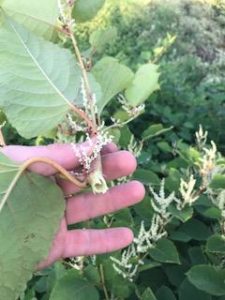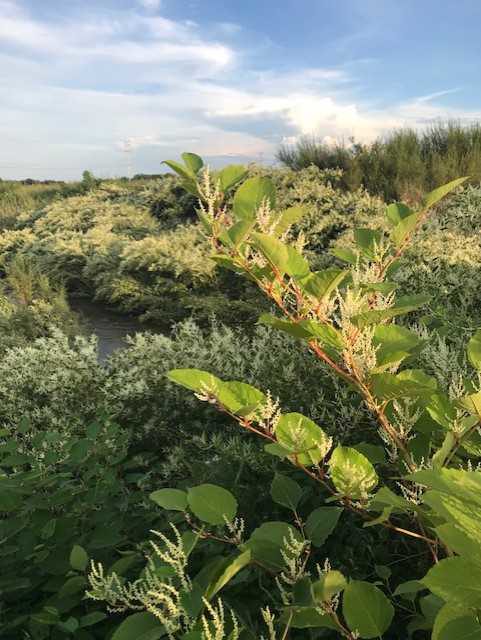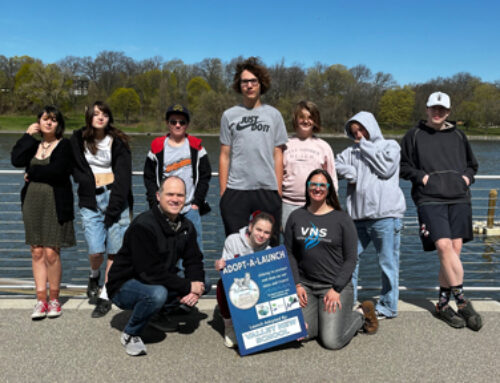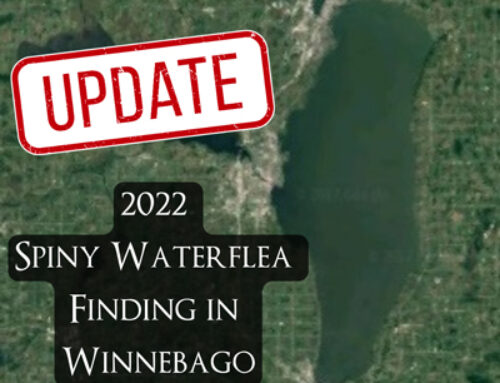What is Japanese knotweed?

Perhaps you have seen patches of bushes with seemingly lovely white flowers along the highway or roads. Well, did you know that this could be a detrimental invasive species known as Japanese knotweed. As the name suggests, this plant is native to Asia. It is distinguishable by it’s unique woody stem that closely resembles bamboo (though they are not related) and it’s white flowers in the late summer early fall. The spade-like leaves branch off the stem in a zig-zag, alternating, pattern. The leaves are large and flat at the bottom which separates it from it’s look-alike, giant knotweed, which is also an invasive species but has not been identified in Wisconsin.
What’s the problem?
Japanese knotweed possesses several advantageous characteristics making it a highly competitive species. Because of this, it can be extremely hard for native species to grow in areas where Japanese knotweed is introduced posing problems for Wisconsin’s ecosystems. Japanese knotweed spreads through its rhizomes (root system), meaning any contaminated soil that has knotweed roots in it that is transferred will most likely spread a new population. The roots also cause problems along shoreline areas. They can prevent tree and shrub growth causing them to take over the area which may also result in increased soil erosion and sediment loading into the nearby water body. Additionally, the roots produce allelopathic compounds which are toxic to surrounding vegetation aiding in the inhibition of any new native growth in the area. If this species is introduced along the shorelines of your favorite lake or stream, it may very well alter the habitat and ecosystem which, in turn, can effect recreational activities including hunting or fishing. Not only that, but if it is present around your home, it can deface property value and even destroy foundations with it adventitious roots. Overall, Japanese knotweed is a remarkably problematic aquatic invasive specimen.
What’s Being Done?
Currently, the Fox-Wolf Watershed Alliance (FWWA) and Waterways Association of Menominee and Shawano County (WAMSCO) are partnering with the Shawano County Land Conservation Department and the Timberland Invasives Partnership (TIP) to write a Rapid Response and Early Detection Grant. This grant will allow Fox-Wolf, WAMSCO, and TIP to actively work around the county to actively identify and remove sites infested with Japanese knotweed. AIS Coordinator Anna Bartsch with FWWA is hoping to take removal days and use them as an educational tool where volunteers can get in on the action and learn more about this rugged invasive species. As of recent, the Japanese knotweed populations in Shawano County qualified to be written under the early detection and rapid response WDNR grant category. Moving forward, Fox-Wolf, WAMSCO and team, are currently writing the grant for approval with the hopes that we can begin implementation in the spring of 2019. With the implementation of this grant, Fox-Wolf and team will be able to stop new populations of Japanese knotweed from spreading, reduce the ecological impacts of the current populations, and overall create a more suitable habitat for Wisconsin’s native wildlife.
Have questions/comments/concerns or, want more information?
Contact: Menominee/Shawano Counties AISC Anna Bartsch
Email: anna@fwwa.org
Phone: 920-851-4336






